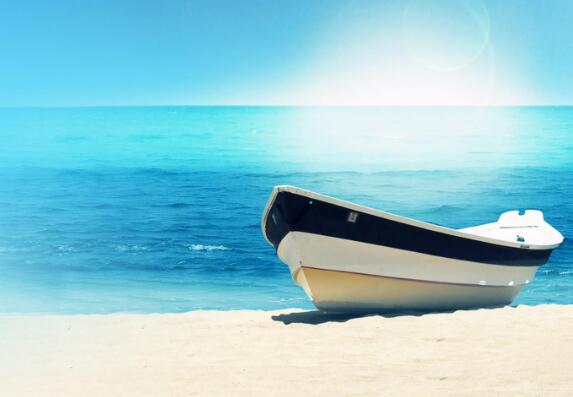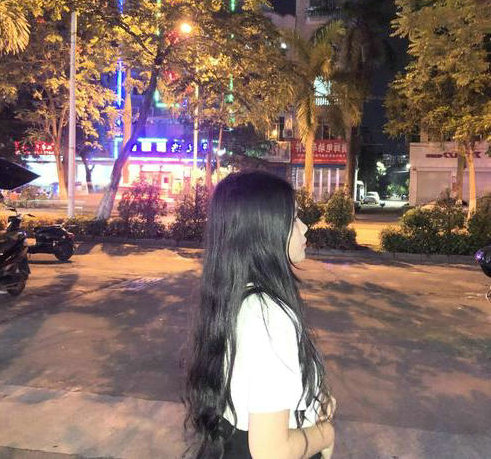
写一篇颐和园的导游词
我们现在即将前往的就是颐和园,利用这一段时间,我向大家简短的介绍一下颐和园的历史以及现在的状况。
最早在辽金时代的时候,皇帝就已经开始在北京修建皇家园林了。
当时在今天的万寿山昆明湖一带修建了金山行宫,将这里称为金山、金山泊。
到了元朝,有将这改名为翁山、翁山泊。
而明代初期则改称西湖并修建了园静寺,命名为好山园。
到了万历是十六年,也就是1588年,这里已经具有一定的园林规模,享有“十里青山行画里,双飞白鸟似江南”的称誉。
然而让这里真正成为一处皇家园林的是清代。
在康熙年间就曾在此修建行宫,到了乾隆十四年到二十九年,也就是1749~1764年,就在原来的基础上修建了清漪园,扩湖,推山,将湖称为昆明湖,山叫做万寿山。
而且这里还成了著名的三山五园之一。
和我国古代的大多数皇家建筑一样,这里也没能躲过入侵者的践踏,在1860年这里被英法联军抢掠并且烧毁了。
过了一些年,慈禧太后挪用了海军经费对这里进行了重建,而且光绪皇帝下昭将这里改名为颐和园。
可是在1900年的时候,颐和园又再次遭到了八国联军(俄英法德意日美奥)的严重破坏。
从此之后对这里所进行的重修,因为财力不足,所以后山部分长期都没有修复。
到了1912年,依照清史的优待条件,颐和园仍然掌握在逊帝溥仪手中。
过了两年,这里曾作为他的私人财产一度开放,但是因为交通不便票价昂贵等原因,没什么人来。
在1924年溥仪被逐出颐和园后,北洋政府将这里正式改为对外开放的公园。
1948年12月,人民政府接受这里后,经过综合治理,仍然保持着其皇家园林的风貌。
而且这里还成为了世界上造景丰富、建筑集中、保存最完整的皇家园林。
颐和园长廊导游词
各位游客大家好,我是阳光旅行社的导游,我姓成,今天就由我来带领大家共同游览这个清代的皇家园林——。
希望我的讲解能够令各位满意,使我们共同度过这一美好的时光。
我们要去的长廊全长728米,共273间画廊,有油漆彩画14000多幅,是中国廊建筑中最大、最长、最负盛名的长廊也是世界上最长的画廊。
长廊彩画题材十分广泛,有花鸟、树石、山水、人物等。
18世纪中叶,(公元1736-1795年在位)曾派宫廷画师到写生,得西湖景546幅,这些湖景被悉数移绘到长廊273间画廊的梁枋上。
本世纪60年代,中国政府不仅保留了西湖风景画,还增绘了具有民族特色的彩画14000多幅,使长廊成为名副其实的画廊。
好,我们现在已经来到了这座长廊,这座长廊是乾隆为他母亲观赏昆明湖的雨景雪景而建造的。
为了让母亲游圆不受雨雪日晒之苦,又能饱揽昆明湖的雨景雪景,乾隆便在万寿山和昆明湖交界的岸边设计修建了一条长长的游廊。
的母亲喜欢听故事,经常一边在长廊中游览,一边让宫女给她讲各式各样的故事听。
有些她特别喜欢的故事,就让宫女们反复地讲。
时间一长,宫女们肚子里的故事讲完了,以前讲过的故事也记不清了,这可难坏了宫女们。
后来,她们想出了一个好办法:将故事的内容画在长廊两侧的梁枋上。
故事越讲越多,梁枋上的人物故事彩画也越来越丰富。
从此,宫女们再也不愁没有故事给太后讲了。
太后呢?因为年迈眼拙,看不清梁枋上的彩画,对此竟毫无察觉,这就是人物故事彩画最初的来历。
现在请大家带好自己的相机和保管好自己的随身物品,大家现在可以参观一下这座长廊,一个小时以后我们在长廊的起点集合。
颐和园的导游词
颐和园,占地约二百九十公顷,与圆明园毗邻以昆明湖、万寿山为基址,以杭州西湖为蓝本,汲取江南园林的设计手法而建成的一座大型山水园林,也是保存最完整的一座皇家行宫御苑,被誉为“皇家园林博物馆”,也是国家重点景点。
清朝乾隆皇帝继位以前,在北京西郊一带,建起了四座大型皇家园林。
乾隆十五年(1750年),乾隆皇帝为孝敬其母孝圣皇后动用448万两百银在这里改建为清漪园,形成了从现清华园到香山长达二十公里的皇家园林区。
咸丰十年(1860年),清漪园被英法联军焚毁。
光绪十四年(1888年)重建,改称颐和园,作消夏游乐地。
光绪二十六年(1900年),颐和园又遭“八国联军”的破坏,珍宝被劫掠一空。
清朝灭亡后,颐和园在军阀混战和国民党统治时期,又遭破坏。
1961年3月4日,颐和园被公布为第一批全国重点文物保护单位,与同时公布的承德避暑山庄、拙政园、留园并称为中国四大名园,1998年11月被列入《世界遗产名录》。
2007年5月8日,颐和园经国家旅游局正式批准为国家5A级旅游景区。
2009年,颐和园入选中国世界纪录协会中国现存最大的皇家园林。
颐和园导游词怎么说
The Summer Palace Situated in the western outskirts of Haidian District, the Summer Palace is 15 kilometers (9.3 miles) from central Beijing. Having the largest royal park and being well preserved, it was designated, in 1960 by the State Council, as a Key Cultural Relics Protection Site of China. Containing examples of the ancient arts, it also has graceful landscapes and magnificent constructions. The Summer Palace is the archetypal Chinese garden, and is ranked amongst the most noted and classical gardens of the world. In 1998, it was listed as one of the World Heritage Sites by UNESCO.Constructed in the Jin Dynasty (1115-1234), during the succeeding reign of feudal emperors; it was extended continuously. By the time of the Qing Dynasty (1644-1911), it had become a luxurious royal garden providing royal families with rest and entertainment. Originally called 'Qingyi Garden' (Garden of Clear Ripples), it was know as one of the famous 'three hills and five gardens' (Longevity Hill, Jade Spring Mountain, and Fragrant Hill; Garden of Clear Ripples, Garden of Everlasting Spring, Garden of Perfection and Brightness, Garden of Tranquility and Brightness, and Garden of Tranquility and Pleasure). Like most of the gardens of Beijing, it could not elude the rampages of the Anglo-French allied force and was destroyed by fire. In 1888, Empress Dowager Cixi embezzled navy funds to reconstruct it for her own benefit, changing its name to Summer Palace (Yiheyuan). She spent most of her later years there, dealing with state affairs and entertaining. In 1900, it suffered again, being ransacked by the Eight-Power Allied Force. After the success of the 1911 Revolution, it was opened to the public.Composed mainly of Longevity Hill and Kunming Lake, The Summer Palace occupies an area of 294 hectares (726.5 acres), three quarters of which is water. Guided by nature, artists designed the gardens exquisitely so that visitors would see marvelous views and be amazed by perfect examples of refined craftwork using the finest materials.Centered on the Tower of Buddhist Incense (Foxiangge) the Summer Palace consists of over 3,000 structures including pavilions, towers, bridges, and corridors. The Summer Palace can be divided into four parts: the court area, front-hill area, front-lake area, and rear-hill and back-lake area.Front-Hill Area: this area is the most magnificent area in the Summer Palace with the most constructions. Its layout is quite distinctive because of the central axis from the yard of Kunming Lake to the hilltop, on which important buildings are positioned including Gate of Dispelling Clouds, Hall of Dispelling Clouds, Hall of Moral Glory, Tower of Buddhist Incense, the Hall of the Sea of Wisdom, etc.Rear-Hill and Back-Lake Area: although the constructions are fewer here, it has a unique landscape, with dense green trees, and winding paths. Visitors can feel a rare tranquility, and elegance. This area includes scenic spots such as Kunming Lake and Back Lake , which presents a tranquil beauty, Garden of Harmonious Interest , built by imitating the layout of Southern China’s classical gardens, and Suzhou Market Street, endowed with a strong flavor of the water town Suzhou.Court Area: this is where Empress Dowager Cixi and Emperor Guangxu met officials, conducted state affairs and rested. Entering the East Palace Gate, visitors may see the main palace buildings: the Hall of Benevolence and Longevity served as the office of the Emperor, the Hall of Jade Ripples where Guangxu lived, the Hall of Joyful Longevity, Cixi's residence, the Garden of Virtue and Harmony where Cixi was entertained, Yiyun House , where once lived the Empress Longyu, and Long Gallery, which measures the longest in Chinese gardens.Front Lake Area: covering a larger part of the Summer Palace, opens up the vista of the lake. A breeze fluttering, waves gleam and willows kiss the ripples of the vast water. In this comfortable area there are the Eastern Bank and Western Bank, Seventeen-Arch Bridge, Nanhu Island, the largest island in Summer Palace, Bronze Ox, an imposing statue beside the lake, and Marble Boat, built in western style with elaborate decorations . On the western bank float six distinct bridges amongst which the Jade-Belt Bridge is the most beautiful.



